Everyone knows that camouflage is used to make yourself, your buildings, and equipment less visible. But in the age before gunpowder, there was little need for camouflage. Admittedly, the Picts and the Teutons used it while ambushing the Romans, but for the most part, ancient and medieval armies disdained camouflage for two main reasons.
First, combat was up close and personal, usually taking place in relatively open areas. Second, men wanted to be seen. In an age of hand-to-hand combat, it was necessary to be seen, to be challenged by the enemy, and to be witnessed gaining a victory if you wanted your triumph to be heralded in song and story.
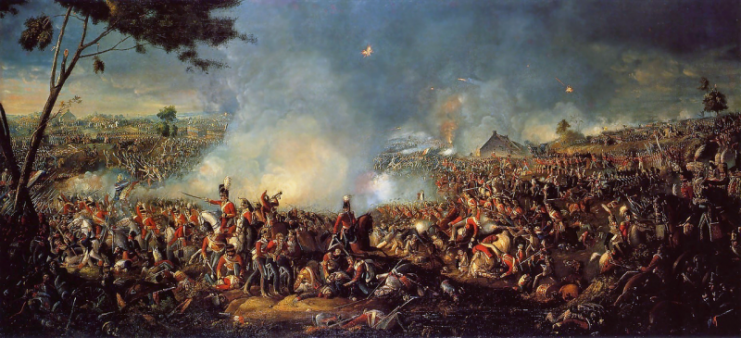
As larger massed armies arose, visibility was needed so commanders could see their troops and coordinate their movements. As the massed formations of primitive gunpowder units gathered on the battlefield, visible uniforms were required for unit cohesion. In many ways, soldiers benefited from being seen.
That began to change in the late 18th century. An argument can be made that the American Revolution is the marker for the “modern” use of camouflage. The Colonists used more earthy and natural colors than their British counterparts, sometimes intentionally.
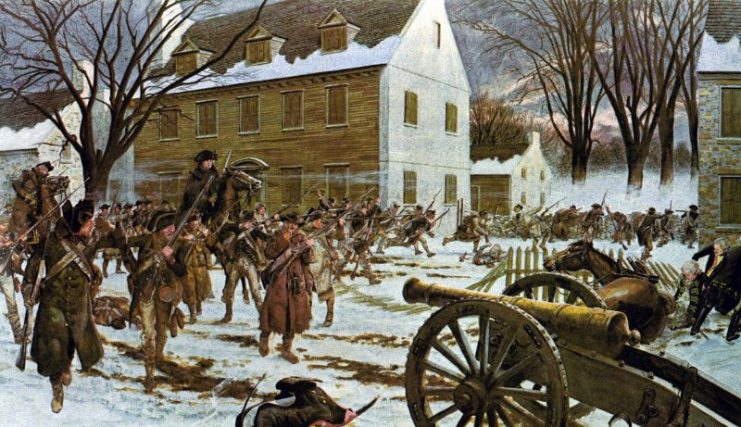
However, throughout the war, Colonial leaders attempted to increase unit cohesion and pride with the introduction of uniforms which were much like the European military uniforms of the time.
That American uniforms were not bright red like the British uniforms does not mean they were camouflaged. However, rifle-equipped snipers and Colonial scouts wore naturally colored uniforms, sometimes enhanced by branches, leaves, and other foliage. British scouts and sharpshooters were known to do this as well.
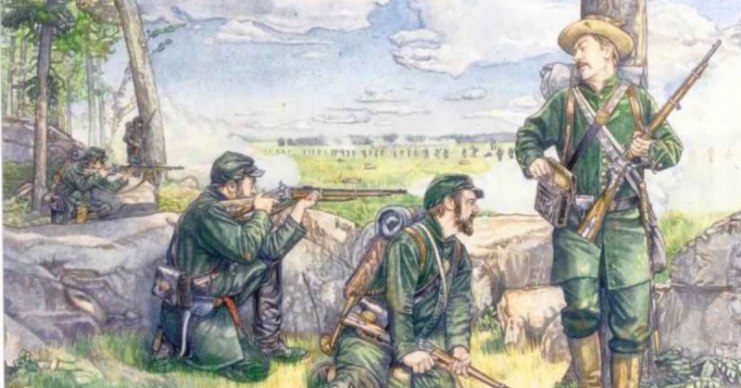
The same held true in the American Civil War. Though the standard blue of the Union was not as visible as the uniforms of earlier armies, they were hardly invisible. As for the men of the South, their uniforms were made of more homespun and simpler colors, like the famous gray and “butternut.”
The Civil War also saw the first uses of aerial reconnaissance, which played a part in the development of camouflage. Tethered hot-air balloons were used to spy on enemy troops. During the conflicts to come, hiding from “eyes in the sky” became more and more crucial.
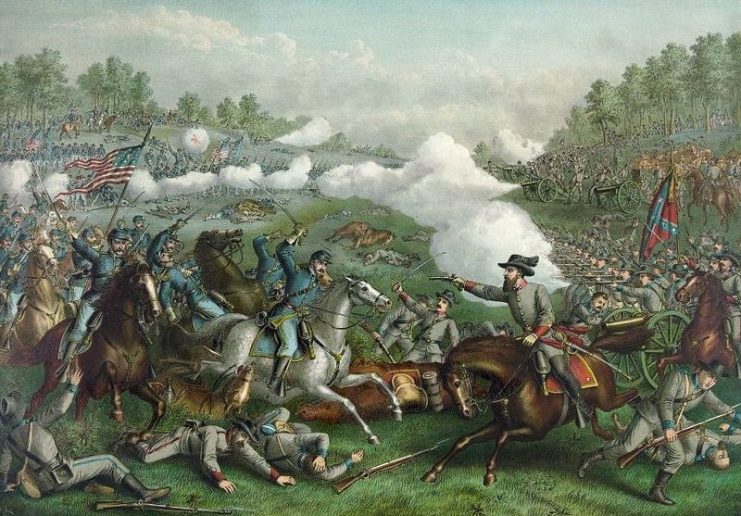
The Franco-Prussian War of 1871 can be called a transition point in the use of camouflage. French units were more visible than their “Prussian Blue” counterparts and made easier targets for the revolutionary Prussian breech-loading “needle gun” rifles.
By World War I, most modern armies were using various forms of camouflage in their uniforms and on some planes and tanks. Camouflage netting and other disguises were used to hide positions from the air. Camouflage was also used at sea.
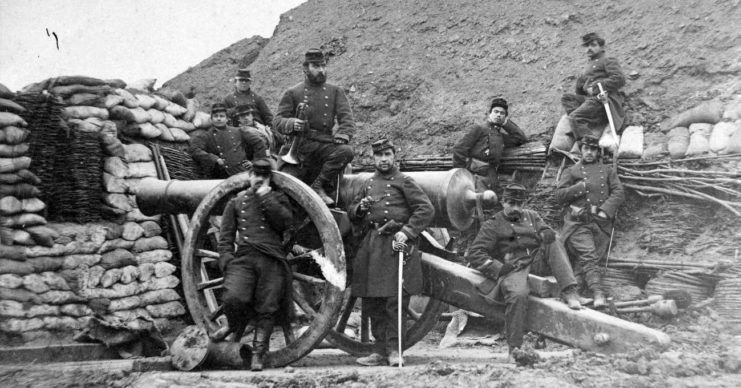
Modern camouflage is based on certain principles. Colors and textures that are natural or often occurring in a particular environment are needed. Remember the scene in Band of Brothers where one US paratrooper points out to another that he might need to think again about his camouflage? He was wearing a pattern of tree branches and leaves in an urban environment.
Patterns that are natural are also needed. It does one no good to have the right colors in the forest if your camouflage netting displays large triangles. “Straight lines seldom occur in nature” is the camouflage artist’s creed, so netting was given irregular edges as well as appropriate coloring.
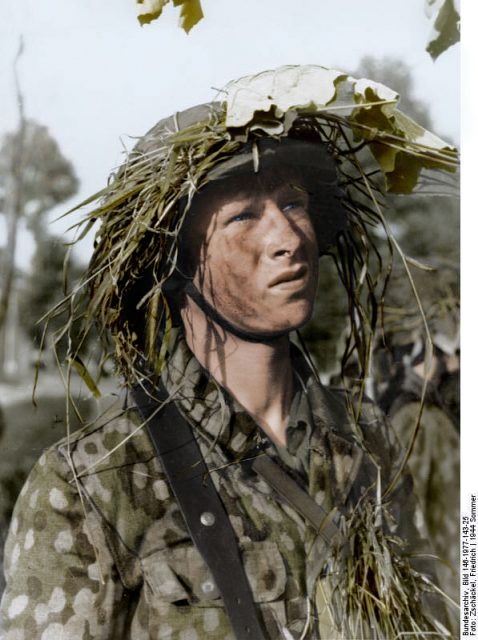
Likewise, soldiers using face paint are taught not to use one solid color and to leave natural skin in some areas, because the human eye is drawn to things it finds unusual.
A face-sized block of olive green in the middle of a bush that includes yellows, greens, browns, and other colors will be seen right away. Shading, or how the light plays on the surrounding areas and the camouflage, is also important.
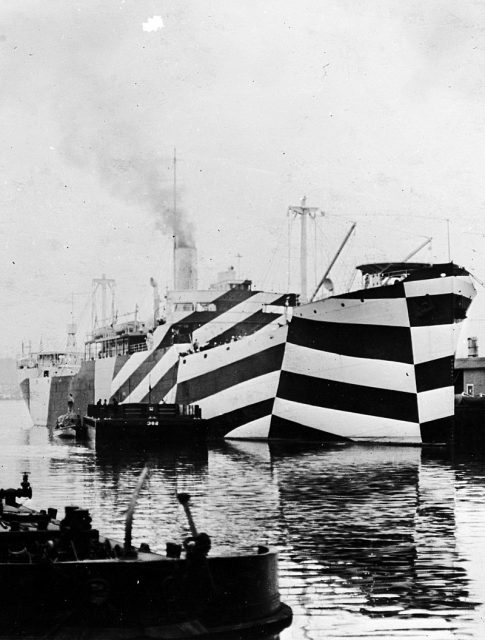
All of these factors were taken into account by the combatants of World War II. In addition to the “blackout,” the term for extinguishing or hiding all of the lights in cities, nations used a variety of clever methods to protect their headquarters, airfields, radar, factories, and other key buildings.
The masters of this type of camouflage were the British. From the beginning, Great Britain employed not only military men but also photographers, sculptors, architects, and artists to develop ways to hide potential targets from the enemy.
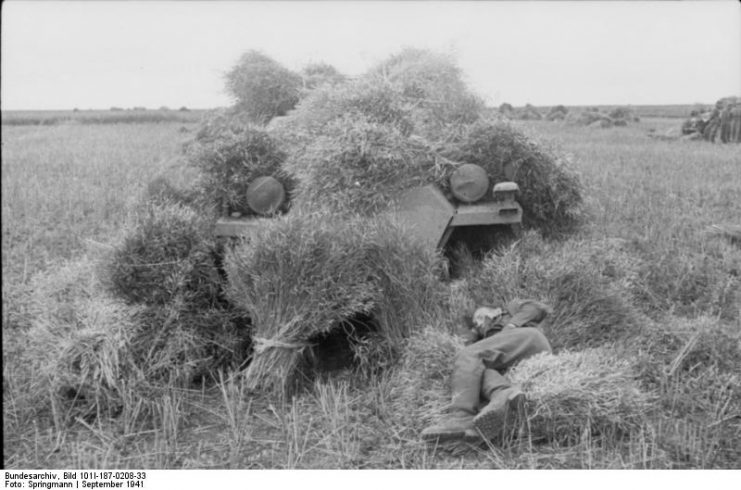
Sometimes this meant that important buildings were disguised as less important ones. A good example of this is the many fake shops and houses, complete with driveways and fences, that were used to hide oil pumping stations from being identified by German planes in the air and spies.
It was decided that disguising buildings or creating shells of them were more effective than camouflage netting in some cases to hide them from spies on the ground. Netting might help to hide things from the air but would only encourage closer observation from the ground.
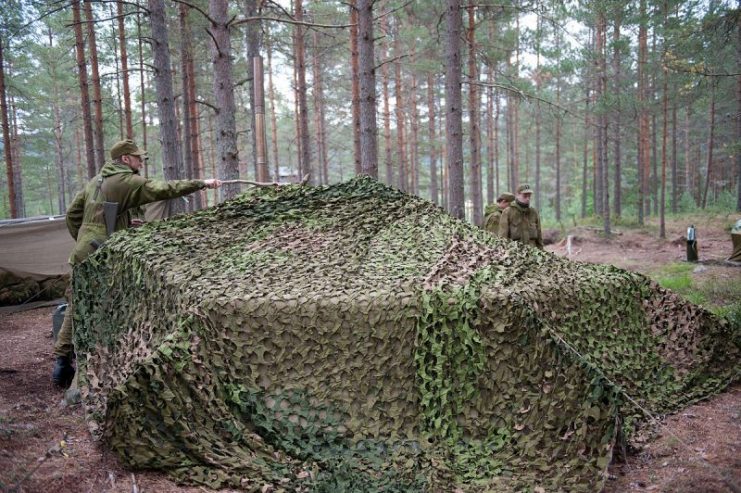
Nevertheless, camouflage netting was still used extensively by all nations in WWII, covering things from individual gun emplacements to city blocks and entire airfields.
The Americans took some British ideas and also developed their own. Perhaps the most elaborate example was not anywhere near a battlefield but in Santa Barbara, California. A completely fake town was built, equipped with streets, signs, water, houses, and a business strip.
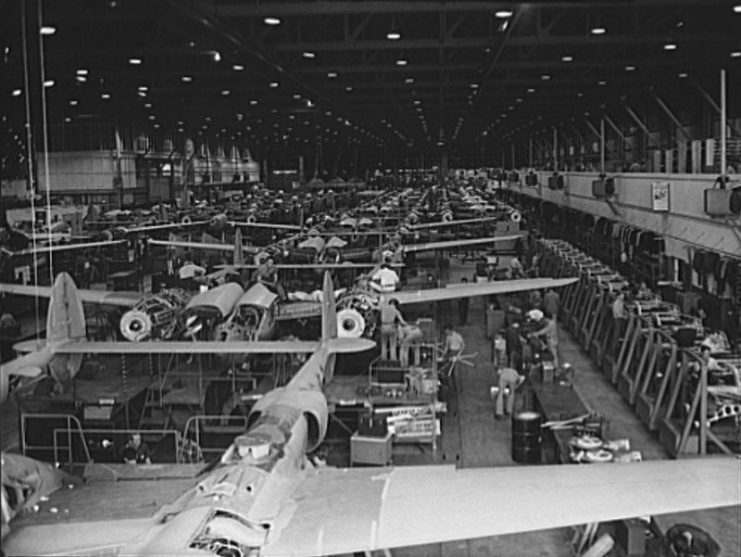
There were even people: workers and actors employed to live seemingly everyday lives. Beneath this fake town, Lockheed built a factory which turned out B-17 Flying Fortresses.
Perhaps the best-known example of large-scale camouflage was in the run-up to D-Day. Not only were miles and miles of camouflage netting and fake buildings used, but a lack of camouflage was also employed in creating the dummy armies that were meant to hide actual Allied numbers from the Axis.
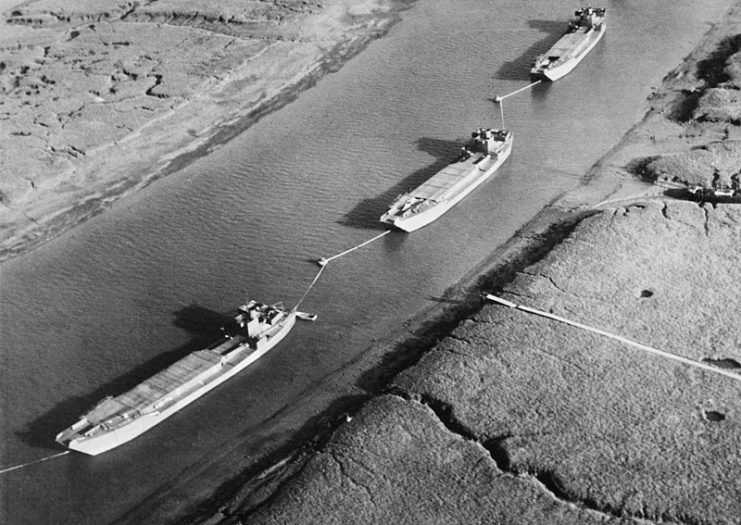
By creating “badly” camouflaged vehicles, guns, and buildings, an army could allow the enemy to see what wasn’t real. This strategy is one reason why Hitler and much of the German General Staff believed Allied strength to be greater than it was. It also encouraged them to think that another larger landing would take place on the coast of France at Calais.
Of course, when most people think of camouflage, they think not of buildings and airfields, but of tanks, vehicles, and most of all, uniforms. Generally speaking, the Allies employed camouflage in a very generic way. Each of the major combatants used a variety of base colors.
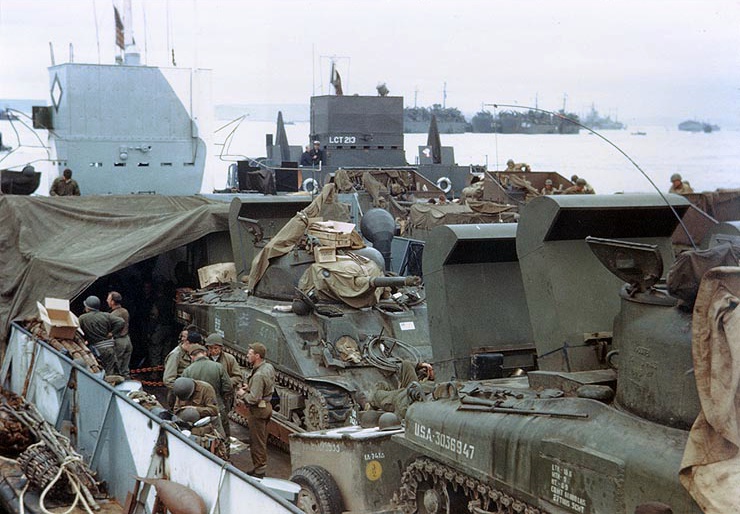
For the most part, Great Britain, the United States, and the Soviet Union all used solid blocks of natural colors. The most common colors were variations of olive green.
Every nation had its own “recipe” for colors, and each was different. Americans favored a darker olive green, the British a slightly lighter shade except when supplied with fully ready American vehicles. The Soviets used a couple of different shades.
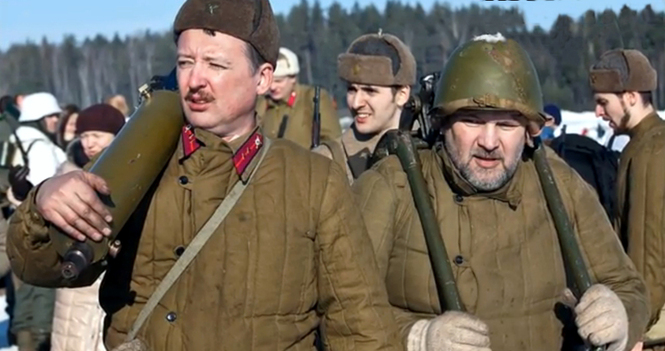
Research has shown that Soviet colors evolved during the war, but all involved greens, browns, and yellows to make a sort of natural green earth tone. Many of the Soviet WWII era tanks seen in museums today are not the same color they were during the war. Most were repainted in what Americans called “Warsaw Pact Green,” a darker shade employed during the Cold War.
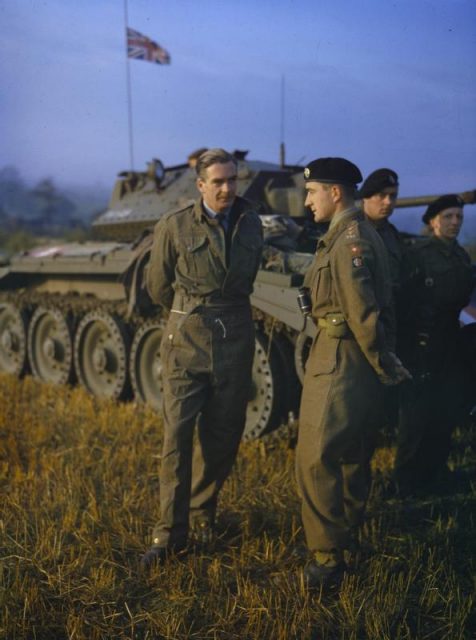
In the deserts of North Africa, the British employed a khaki paint scheme to hide their vehicles, guns, and buildings. In contrast, the Americans, being new to the war, generally kept their darker olive green. In winter snow, all Allied and Axis forces employed various forms of white camouflage in different patterns.
This was not all paint, however. German troops, lacking paint in the latter part of the war, piled snow on vehicles. All the armies also used white cloth, such as sheets, to hide in winter.
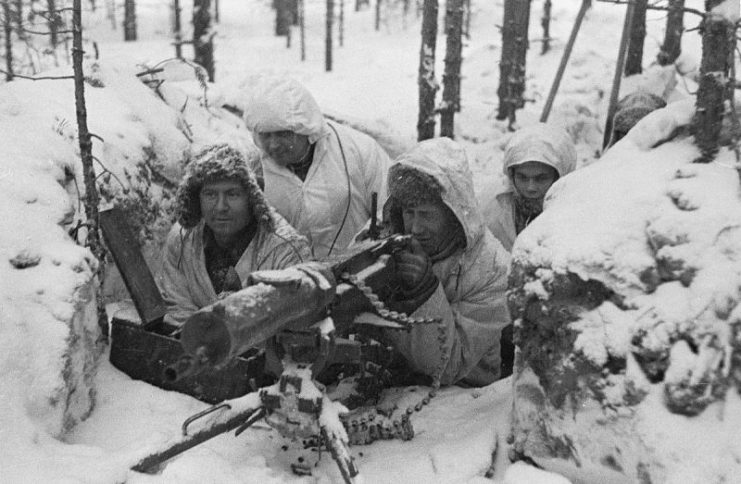
Most soldiers were given leeway in how they used vegetation to hide on the battlefield. This allowed Allied forces to conceal themselves a bit more effectively than if they’d just been in their basic uniforms.
Though there were variations within national forces (for instance, Soviet naval troops’ uniforms differed from Red Army uniforms), the Allies again used the base olive greens and khakis to give their troops a measure of “protection.” As the war went on, patterns began to be seen on Allied troops uniforms, such as the famous American “frog-skin” camouflage.
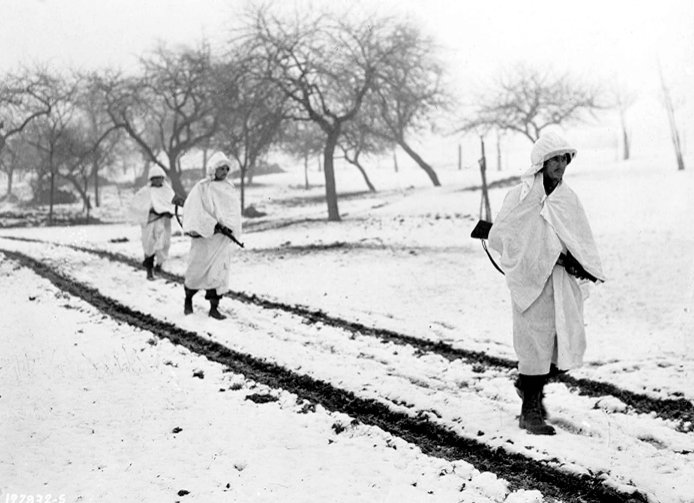
The masters of camouflage in WWII were the Germans. The German military is credited with separate camouflage departments in the armed forces in the years between the wars. This was both a natural evolution of an already existing interest and an extension of the work of individuals and units during WWI.
Many German infantry units developed their own camouflage patterns during the Great War. Modern infantry camouflage traces a direct line back to German troops in WWI.
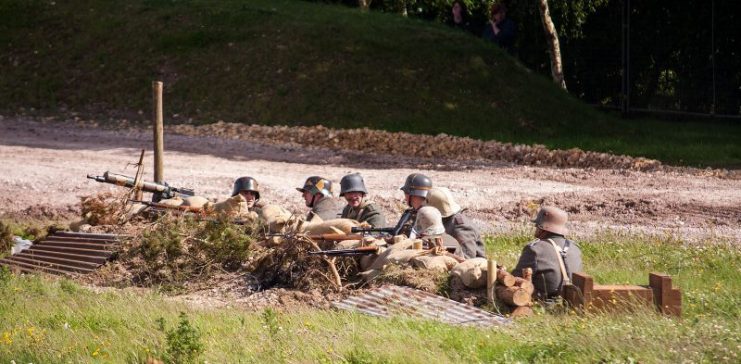
When WWII broke out, the German Army used variations of the same “feldgrau” (field gray) and green that gave the German troops the nickname used by the French during both wars: the “Boche,” which meant “cabbage.” This was not only a reference to the color of the uniform but was also a term used for someone thick-headed.
These green and gray colors were difficult to see in morning mist, and at twilight – two favorites times for attack. Desert yellow was used in Africa and Sicily.
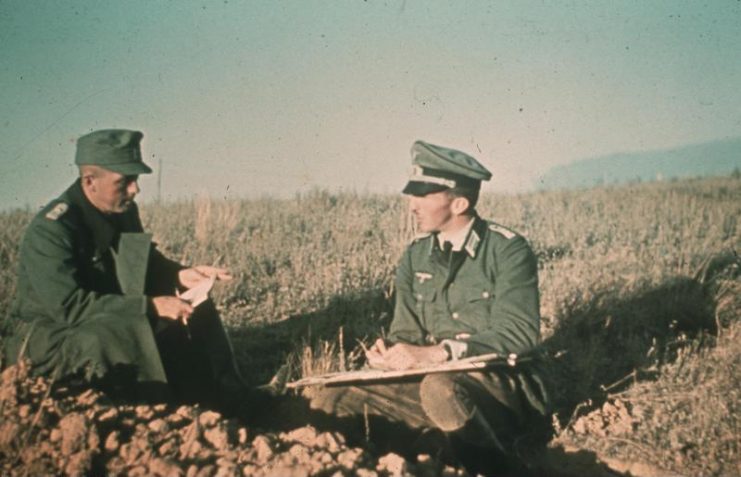
The most famous examples of German WWII camouflage, much of which is still in use today in various ways, are the camouflage patterns of the Waffen-SS. Being the elite soldiers of the 3rd Reich, the men of the Waffen-SS were generally better equipped than their army counterparts, and this included their clothing.
Camouflage studies done for the SS resulted in their offering contracts to clothing companies that could develop and supply camouflaged jackets, pants, helmet covers, tunics, and so on.
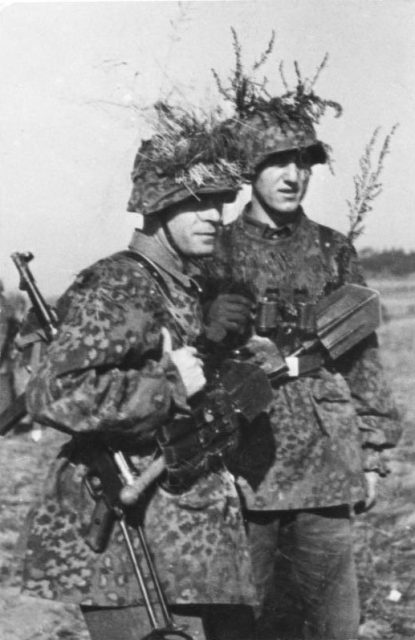
Though SS combat uniform patterns had a number of names, the most common patterns were known as “flecktarnmuster” (or “flecktarn” for short), meaning “mottled camouflage.” Other names included “Splittertarnmuster” (“splinter pattern camouflage”) and, in English, “pea-pattern.”
Many Waffen-SS uniforms were reversible and had a spring or summer pattern on one side and a fall pattern on the other. In winter, some units were issued white smocks while others improvised.
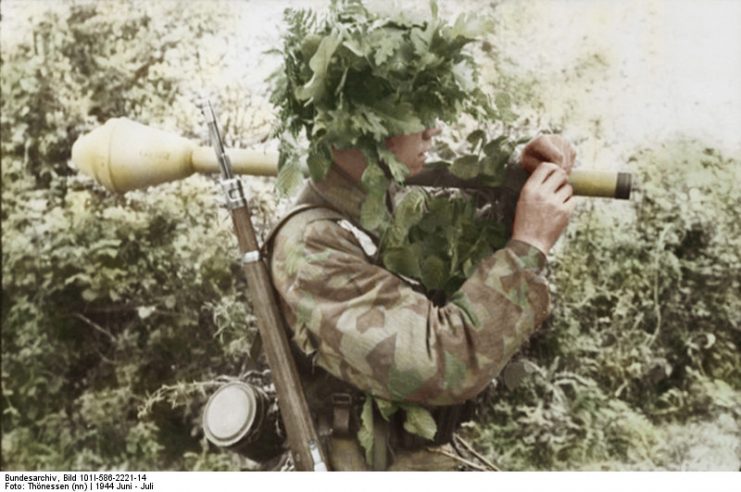
The seasonal patterns included varieties of colors from golds and yellows to browns, greens, and black. These patterns, with and without modification, are still in use not only in Germany today, but also in armed forces across the world.
